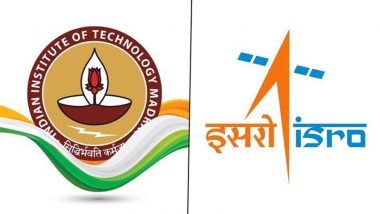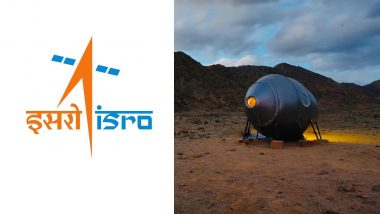Chennai, March 2: India will launch its first state of the art earth observation satellite Geo Imaging Satellite (GISAT-1) to be placed in geostationary orbit on March 5, said the Indian Space Agency. The satellite will provide real time image of large area of region of interest at frequent intervals. The GISAT-1 will also enable quick monitoring of natural disasters, episodic events and any short term events. ISRO To Launch Geo Imaging Satellite With GSLV-F10 Rocket on March 5.
According to Indian Space Research Organisation (ISRO), the GISAT-1 will also provide spectral signatures for agriculture, forestry, mineralogy, disaster warning, cloud properties, snow, glaciers and oceanography. The satellite will have payload imaging sensors of six band multi-spectral visible and near infra-red with 42 metres resolution; 158 bands hyper-spectral visible and near infra-red with 318 metres resolution and 256 bands hyper-spectral short wave infra-red with 191 metres resolution.
Weighing 2,268 kg, the GISAT-1 will be carried by the three stage geoopping-pictures-6419613.html" class="drop-thumb-link" title="Kim Kardashian Channels Vintage Glamour in Stunning Sheer Lingerie for Latest Photoshoot, See Jaw-Dropping Pictures">Kim Kardashian Channels Vintage Glamour in Stunning Sheer Lingerie for Latest Photoshoot, See Jaw-Dropping Pictures













 Quickly
Quickly




















